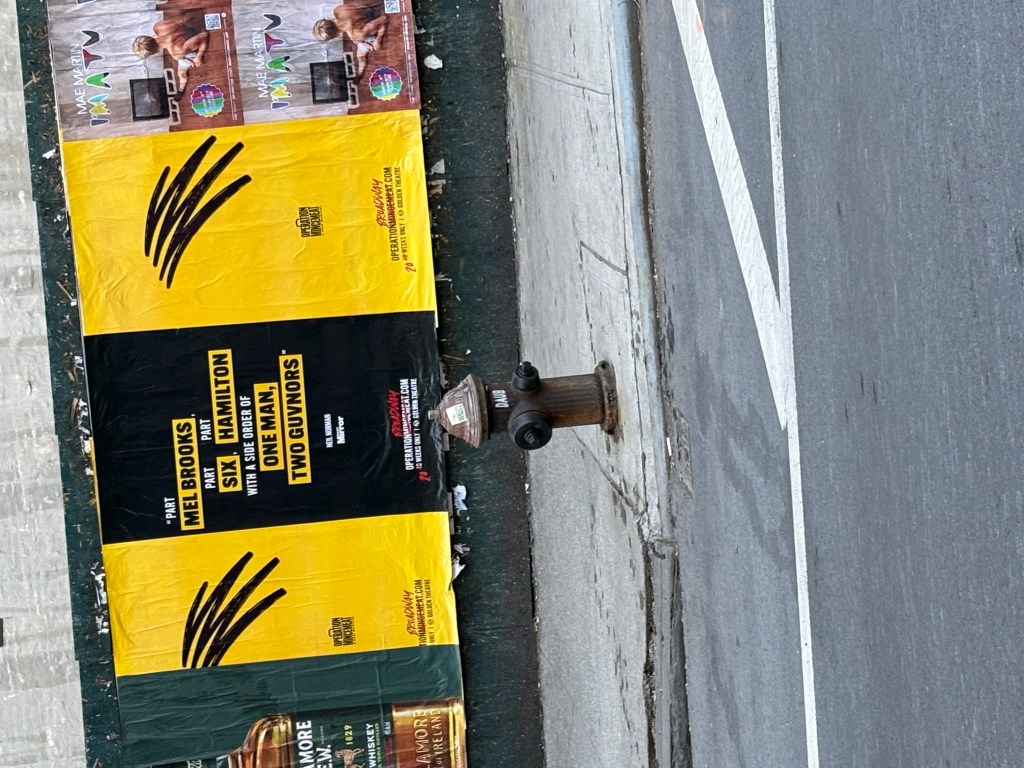From the inauguration of 47 to Oscars 97, this has been a series of disquieting and surreal weeks. After listening to the president’s State of the Trump-o-verse on Tuesday night, with its self-congratulatory truths, half-truths, untruths, false promises and rousing invective, I wanted to respond in some mind-cleansing way. The New York Times, however, did its usual admirable news report, and its commentators were quick to point out the highs and lows of the evening’s lengthy remarks. So instead, I decided to return to March 2023, when the editors of Posters Can Help asked me to write a foreword for their book; I relied on my hardwired notions about design for social activism to fill the page with thoughts. I’m moderately convinced that posters have a certain suffused power to affect minds, even if it’s only to draw attention for a moment.
The poster reproduced below made me look twice and forced me to rush to the encyclopedia (and then Google) to find out what Operation Mincemeat was. It was only after a friend interpreted the image for me—I can’t believe I didn’t see it—that I realized how clever it was. Although not directly related to this recent post nor in any way a polemic for or against any contemporary burning issue, it is a gateway to experiencing something other than the plot against American democracy.
Can Posters Help?
The title of this essay is a loaded question. I am going to try to answer it.
Posters have since the 19th century served many different social, political and commercial functions. If you consider social messaging to include politics and healthcare, among other human rights and services, then the answer to the question must be addressed in two parts. Posters are tools of commerce and society—sometimes the two intersect, but not always. To the former is the answer: Yes! Posters continue to have a vital place in the consuming culture. They advertise everything from food and fashion to cars and computers; in fact, everything we consume can be introduced for the first time to the public, who as a rule are delighted to see the constantly changing posters on walls, hoardings and billboards. These commercial posters inform and entertain on themes as broad as art shows, musical concerts, television programs, lifestyle products, and so on. The latter requires a more ambiguous answer.
Posters can also, just as importantly, advocate, protest, caution and educate a viewer or audience on such topics as glory or the horrors of war, the serenity and virtues of peace, the dangers of climate change, the necessity of safe space, the norms of community, the gift of hope, and the value of events that bring individuals together.
Taken as a whole, and assuming the design and content of the posters in question meet certain qualifications—grab attention, elicit response, challenge perception and infiltrate the mind of the receiver—then and only then can posters help augment reality. In short, they do help in a variety of mnemonic ways.
Not all posters function at the same level of useful intensity. Self-indulgent design can be a liability. Over-stylized imagery can dilute a message. Yet legibility and readability (two different attributes sometimes linked together as one) are not, however, always the requisite for effective social posters. Often the surprising visual impact of an abstraction is more motivational than a simple realistic representation; chaos can be more relevant than a pristine work of fine design. The designer’s emotional response to an issue—whether it is the Ukraine war or containing the pandemic—can, and is, designed in differently, sometimes counterintuitively, unmodulated ways.
Can posters help? There is much that is positive to be said about static representation. As a culture there is a greater expectation of movement, of motion, of change. Time for contemplation has been reduced exponentially as our computers and devices become more powerful, and especially as artificial intelligence revs up the speed in which design can and is accomplished. Posters, even those that are designed on and for the screen, are essentially lasting. Sure, they can be animated if the designer so chooses, but they can also be printed and hung on surfaces or sent through snail mail (just like things were done in the Before Computer [BC] era). The benefit of the semi-but-not-entirely-hybrid poster (those that are made for and reside on internet sites or apps) is that how they are used is a choice—an agreement between the designer and the client (if there is one) and the viewer (or user). This makes posters helping more economical and efficacious.
The former means the latter is inescapable. Posters for social (including, among other issues, gender and sexuality), political (including issues rights, law and freedom in general) and any personal concerns (whatever they may be at any given time and place) can be accomplished as quick as the creative (or polemic) mind can conceive them, produced and distributed in large numbers through a specific locale or countries around the world.
The golden age of the poster has long been considered the pioneering turn of the century, then the modern mid-20th century, then the psychedelic ’60s, and so on through the decades. Today is another golden age. It is the digital golden age. Can posters help? They still help. They will help issues and causes and—most importantly—help people be aware of the world in its present state.
The post The Daily Heller: Can Posters Help Us Survive? appeared first on PRINT Magazine.

